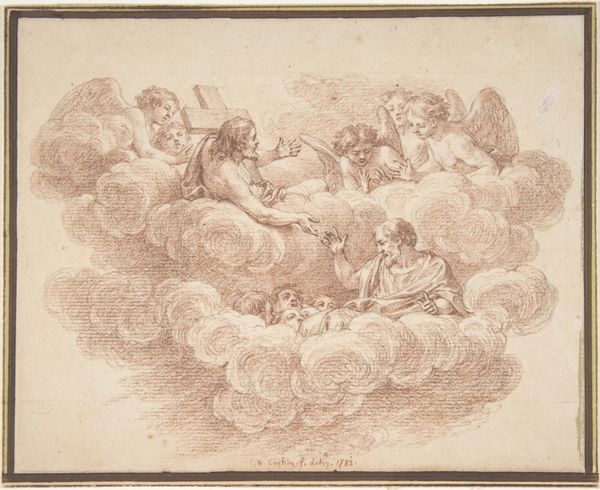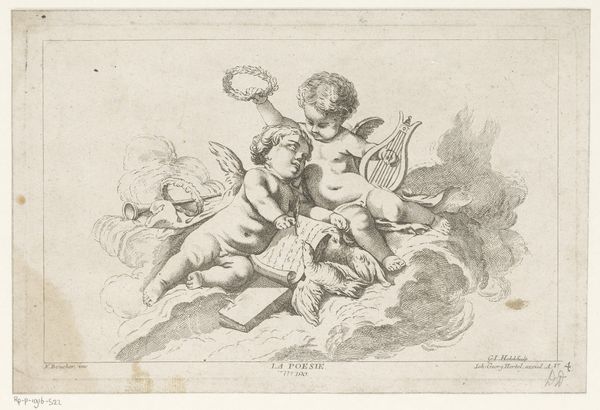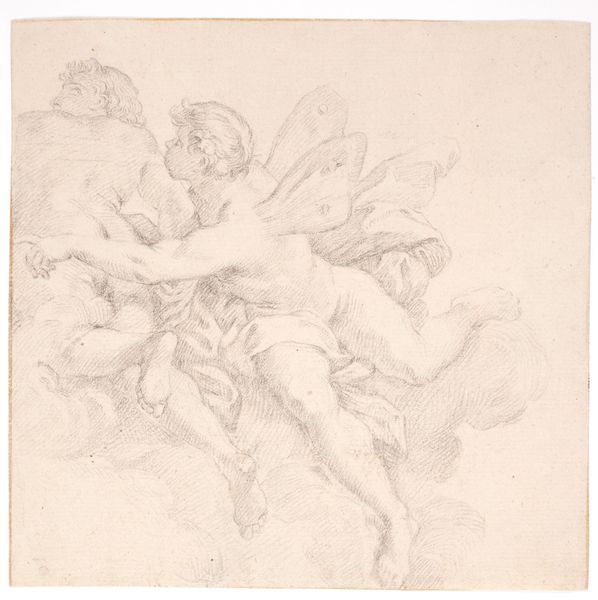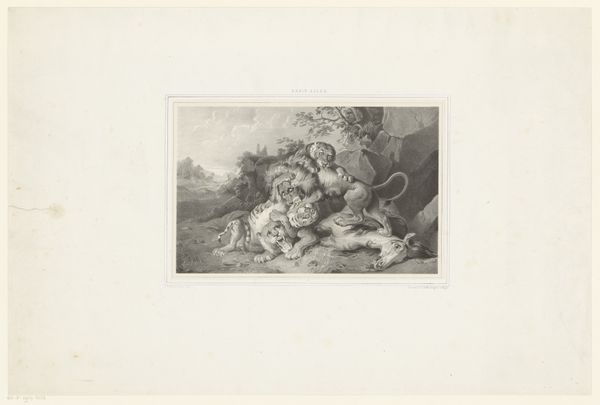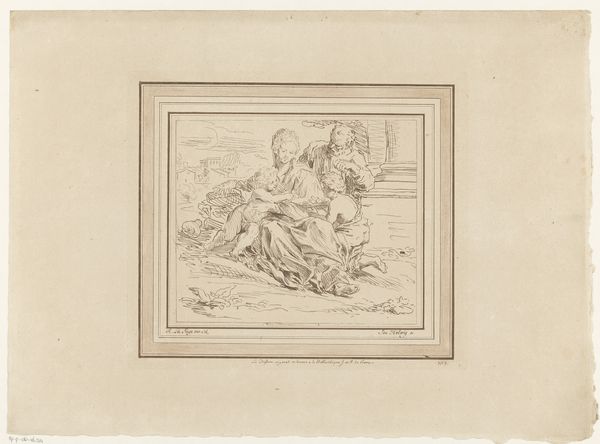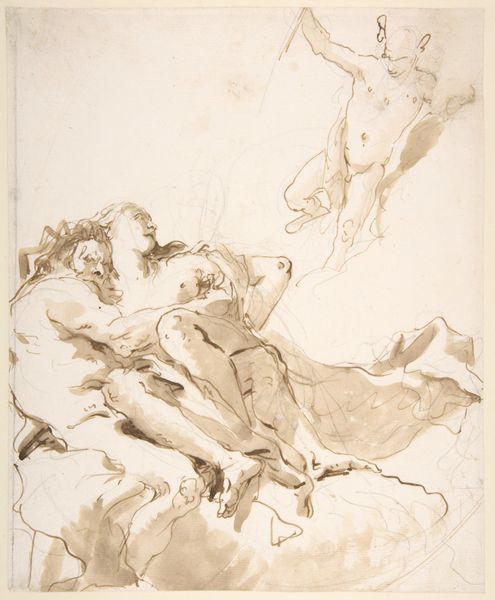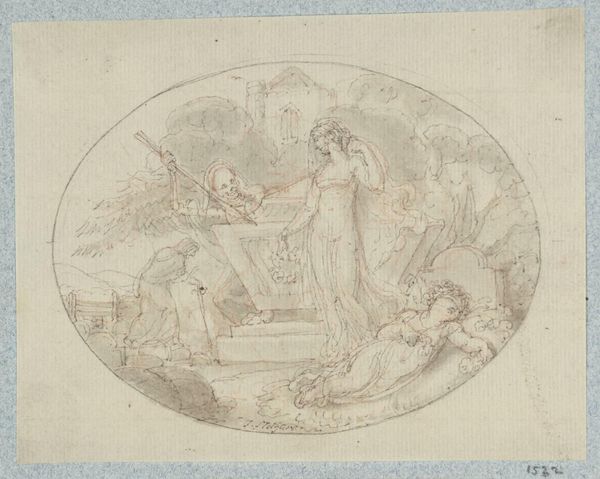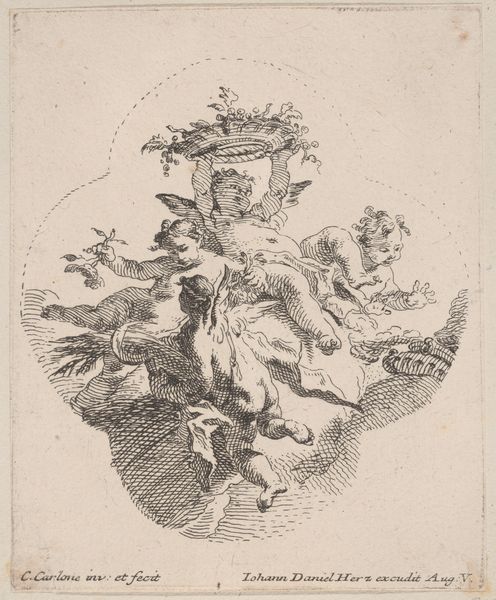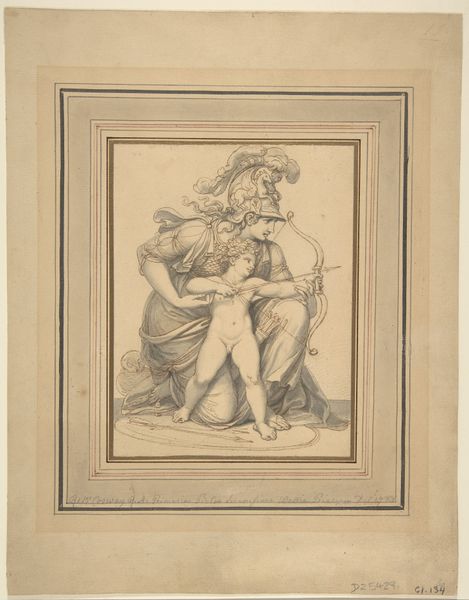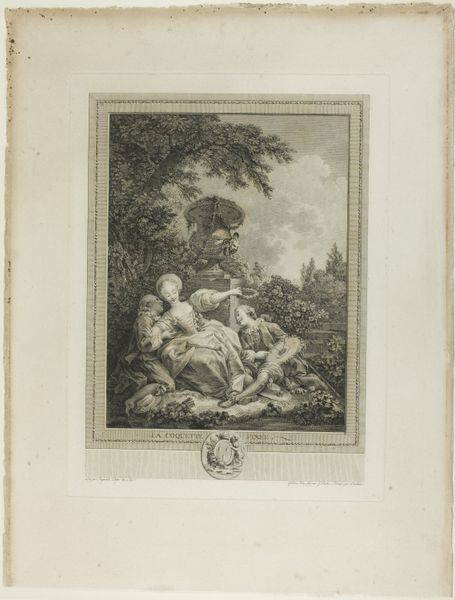
Dimensions: height 135 mm, width 131 mm
Copyright: Rijks Museum: Open Domain
Curator: This is “Musicerende geniën,” or “ музицирующие гении”, by Dirk van der Aa, thought to have been created sometime between 1741 and 1809. It’s a drawing done in pencil. Editor: It feels very light, airy. Almost ephemeral. The soft grey pencil lends a dreamlike quality to these cherubic figures nestled amongst what appears to be clouds. Curator: It's quite typical of the Baroque style that Van der Aa was working in. We see that figuration is softened here and that music is employed as a kind of... heavenly occupation? A higher calling, maybe. Editor: I find it intriguing how these putti embody both innocence and power. Considering the historical context, are they simply decorative, or do they subtly critique or reinforce existing power structures through their representation of divine harmony? Perhaps they are tools through which religious or social order are mediated and thus are used in social settings and art theory discussions to address inequity. Curator: Precisely. We can’t overlook the way these cherubs, common in art patronage and religious commissions of the time, serve as a form of idealized innocence, a concept rife with societal expectations about gender, childhood, and obedience. Their performance, musical or otherwise, has often been dictated by larger power dynamics, reinforcing, or, occasionally, subverting, societal norms. The Baroque emphasis on ornament and display certainly contributed to the visual vocabulary through which these ideas circulated. Editor: Yes, and thinking about the institutional role, where and for whom would this drawing have been displayed or circulated? The materiality and medium, pencil, speaks to intimacy as a more informal medium than something like oil paint and suggests that maybe the artwork operated in more private or domestic circles rather than public arenas. It reminds us how art reflects and shapes public perception and collective memory of an era, dictating who can occupy or consume it, as well as from which spaces of knowledge are created. Curator: It is certainly interesting to think about its initial display and life beyond its creation and, further, how interpretations and cultural analyses evolve with time. Editor: Indeed. Reflecting on this drawing leaves me pondering how even seemingly innocent depictions can reveal complex social narratives and histories when viewed through an intersectional lens.
Comments
No comments
Be the first to comment and join the conversation on the ultimate creative platform.
